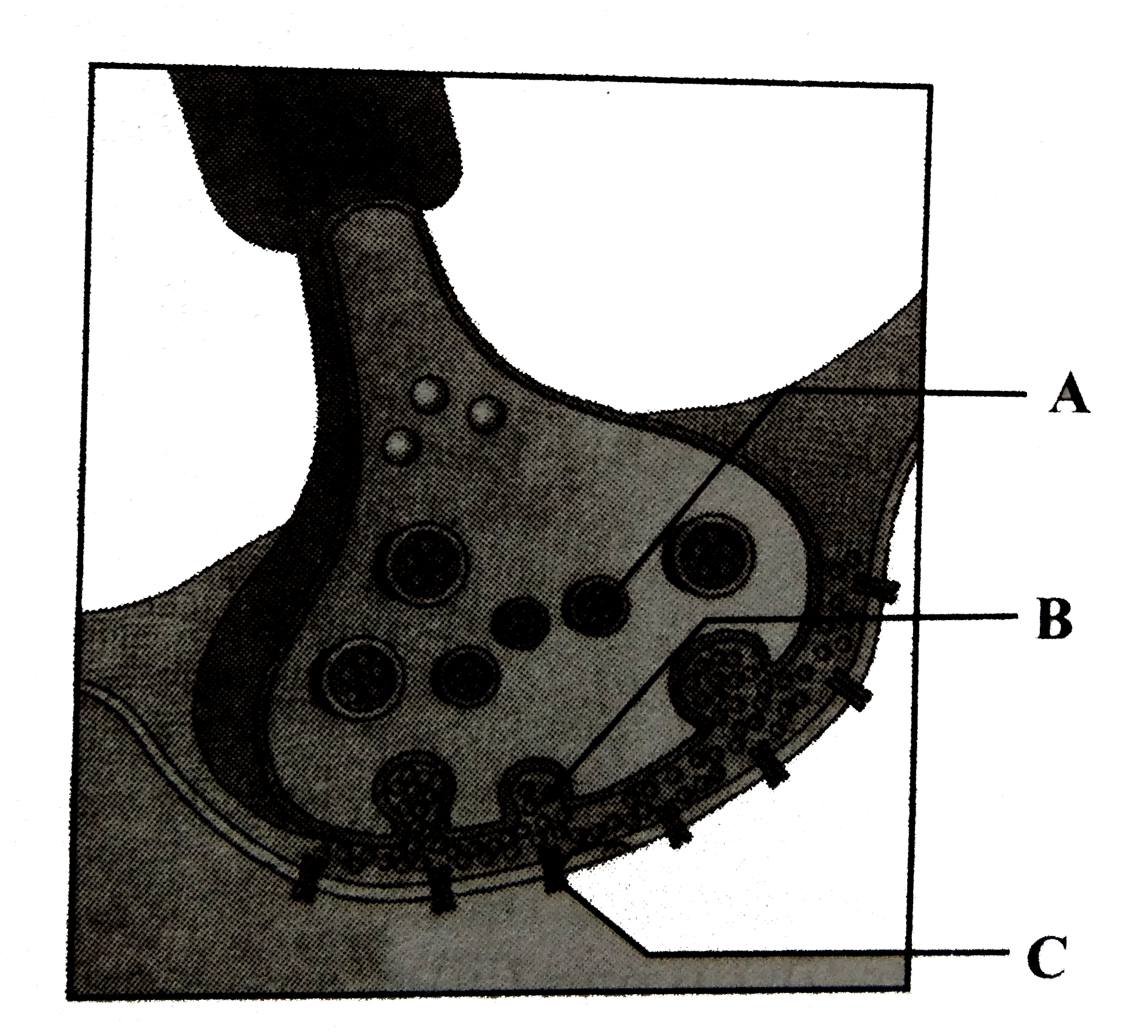Chemicals which are released at the synaptic junction are called
A
hormones
B
neurotransmitters
C
cerebrospinal fluid
D
lymph
Video Solution
Text Solution
The correct Answer is:B
A typical synapse consists of a bulbous expansion of a nerve terminal called a pre-synaptic knob lying close to the membrane of a dendrite.The cytoplasm of the synaptic knob contains mitochondria, smooth endoplasmic reticulum, microfilaments and numerous synaptic vesicles. Each vesicles contains neurotransmitter (chemical substance) responsible for the transmission of the nerve impulse across the synapse.
|
Updated on:21/07/2023
Topper's Solved these Questions
Similar Questions
Knowledge Check
- Question 1 - Select One
The chemicals which regulate the synaptic transmission at chemical synapses are called
ANeurohormonesBNeurotransmittersCIodothyroninesDSecond messengers - Question 2 - Select One
A synaptic cleft is
Athe space present inside the presynaptic neuronBthe space present inside the postsynaptic neuronCthe space separating the pre and postsynapitc neuronsDthe space present inside the synaptic vesicles - Question 3 - Select One
The given diagram shows axon terminal.Select the option that correctly matches the steps in transmission of impulses (list i-vii) with the labellings (A-C) in diagram.

(i)Chemicals called neurotransmitters are released in the synaptic cleft through ion channels.
(ii)When an impulse arrives at the axon terminal, it stimulates the movement of synaptic vesicles.
(iii)Neurotransmitters are endocytosed into the neurons.
(iv)The ions channels close with the binding of neurotransmitters to their specific receptors vesicles.
(v)Synaptic vesicles move towards the membrane where they fuse with the plasma membrane.
(vi)Neurotransmitters are released in the synaptic cleft.
(vii)The released transmitters bind to their specific receptors on post-synaptic membraneAA B C(ii) (iii) (i)BA B C(v) (vi) (iv)CA B C(ii) (vi) (vii)DA B C(v) (iii) (iv)
Name some chemicals that are released by acrosome during fertillization
View SolutionThe substance which decreases the rate of a chemical reaction is called-
View SolutionThe substance which decreases the rate of a chemical reaction is called :
View SolutionThe substance which decreases the rate of a chemical reaction in called a/an:
View SolutionThe reverse voltage at which the current increases enormously, in a p-n junction, is called
View Solution

